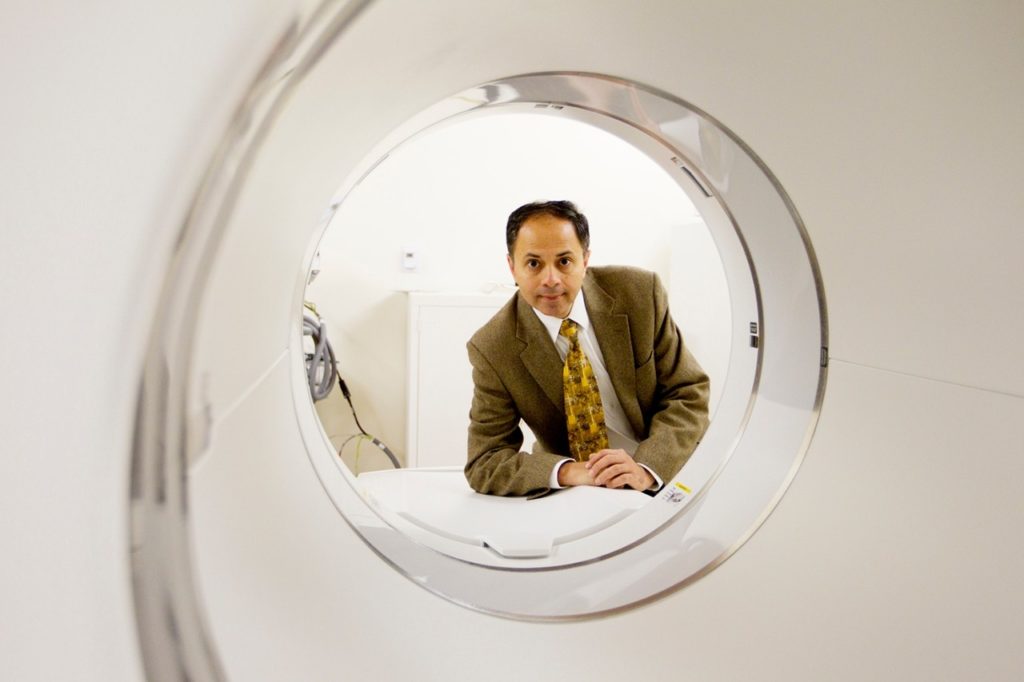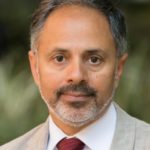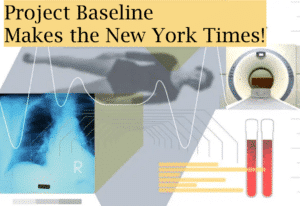Blog
Posts Tagged ‘early detection cancer research’
Canary Foundation’s Ovarian Cancer Initiative: moving forward with matching specimen and imaging tissue in 3D
March 8, 2021

The Canary High Grade Serous Ovarian Cancer (HGSC) study is leveraging the expertise and resources of four institutions to study the microenvironmental factors that can lead fallopian tubes to develop this deadly type of ovarian cancer and thus provide a signal to alert for the presence of early disease. The Fred Hutchinson Cancer Research Center in Seattle, the University of Pennsylvania, the Van Andel Institute in Michigan, and the University of California San Francisco have built the infrastructure to share fallopian tube specimens, experimental and clinical data, and analytical teams.
The small pilot study goals are to ask whether it is possible to compare women carrying the BRCA mutations (who are at higher risk of developing ovarian cancer) compared to those who do not carry the mutation and determine whether it is possible to find a measurable difference in the microenvironment.
Based on their first results, the team is selecting a larger set of specimens, matched for clinical factors and BRCA mutation status, and will conduct RNA, DNA and methylome sequencing. The group is also comparing competing platforms for imaging the tissue expression in 3D so that differences along the length of the tube can be evaluated and tested for correlations with the genetic data.
Our ovarian cancer team continues to build infrastructure for innovative pilot study and biobank.
October 7, 2020
The Ovarian team has used these past months to hone and polish the infrastructure for the High Grade Serous Ovarian Cancer Initiative and to ensure that high quality molecular data can be generated from the samples. This includes both the pilot project that focuses on changes in the micro-environment, and the retrospective study that looks back at tissue.
Focus of the project
Our focus is to define the role of the fallopian tube micro-environment in the development of high grade serous ovarian cancer (fallopian tube being the most common ovarian cancer), with the ultimate objective to find targets for prevention and markers of early disease onset for early detection.
Convening experts
In order to develop a robust and innovative research plan, we invited a multidisciplinary team of roughly 25 world class ovarian cancer researchers from across the US and Canada to an initial two day planning meeting in March 2019 in Los Gatos, California. The meeting was highly successful. The number of promising ideas exceeded our available funding level. Over the ensuing months the Executive Committee worked to refine and finalize our research proposal and also put in place the necessary infrastructure to conduct our studies.
What problem is the team trying to solve? Our overall plan includes a series of innovate pilot studies specifically designed to demonstrate the power of our team and generate preliminary data that can be leveraged to compete for large grants by the end of a two year period. The research will be performed in two phases: first, a retrospective phase that involves analysis of previously collected, banked fallopian tube samples with associated clinical information, and second, a prospective study, that includes newly collected samples, each with the goal of identifying what changes in the molecular landscape signal cancer.
Our progress March – Summer 2020. During these past months, the team has finalized the infrastructure for the pilot program and has worked to ensure that the expected high quality molecular data from our samples can be achieved. The process for sample sharing has been completed. Additionally, reviews, discussions, and decisions have been held to work out a draft of the high-quality protocol necessary for all team members to follow. 6 potential sites have been identified. We are testing our data management processes. This includes a portal for sharing and annotating data among multiple investigators and analysts. Canary Foundation has experience in this field.
Next steps: the in-person clinical aspect of the pilot will resume when each of the participating sites are reopened. When further steps in reopening allow, clinical sites will be responsible for providing patient samples and annotated clinical and pathologic data in a timely and cost-effective way. Each site includes a collaborative PI who has a robust system in place for conducting translational research studies, banking samples and linking clinical information.
Additionally, steps are being taken to identify and put in place a central project manager. An interim plan is in place utilizing resources at the University of Pennsylvania.
Organizational Structure
Clinical data and sample coordination center: The University of Pennsylvania leader is Michael Feldman. We are working with the team at UPenn to write sample protocols and requirements and to finalize the overall collaboration agreement that will be signed by all institutions. The coordinating center will receive samples from clinical sites, perform quality control, and prepare and ship samples to molecular profiling sites. The center will also maintain the clinical database of participants linked to their sample information. The clinical data will be linked later to the molecular data for each of the samples and participants.
Clinical teams: when further steps in reopening allow, clinical sites will be responsible for providing patient samples and annotated clinical and pathologic data in a timely and cost-effective way.
Molecular profiling sites: Molecular analyses will include bulk RNA and DNA sequencing, global methylome profiling, proteomics with spatial profiling, single cell analyses using the Nanostring DSP platforms.
Data management and analysis center: We have multiple types of data that need to be securely stored and annotated. We are using a similar structure to that used by the large NIH-funded effort, TCGA. Raw data will be hosted in the data center managed by Adam Olshen at UCSF. We will run data analysis pipelines and upload processed data into a program that will function as a portal for sharing and annotating data among multiple investigators and analysts. Canary Foundation has experience in this field.
Shaping bioinformatics. Our leadership and analysis team leaders are enthusiastic about working together using Synapse and the Sage engineers. The associated infrastructure and analysis plan from our bioinformaticians Adam Olshen (UCSF) and
Hui Shen (Van Andel) has been reviewed and approved by the group.
Checking our system.
- Testing of infrastructure and logistics with a small set of samples will include:
- Assessing technical issues
- Management of resources
- Rapid course correction procedures
- Generating first data set
- Send samples through the pipeline (10 BRCA mutation carriers)
- Check quality control measures on data set
Working as a team. Part of the strategy is to demonstrate our ability to work together and generate data so that we are able to apply for additional support from external agencies (e.g. government or foundations). The team is actively making connections to seek out the best funding opportunities as part of our future plan, and the breadth of expertise in the team and their ability to work well together go a long way in securing future funding.
Remembering Sanjiv Sam Gambhir, MD, PhD, Stanford University Radiology Chair, Director of the Canary Center at Stanford for Cancer Early Detection
August 4, 2020
Sam’s image: forever in our hearts.
 November 23, 1962 – July 18, 2020
November 23, 1962 – July 18, 2020
“The body is a mystery.” This is something you don’t expect to hear from a distinguished worldwide leading expert in radiology, who developed cutting edge imaging tests to spot disease early inside the body using new and repurposed technologies in highly innovative ways. You would think such a person would tout how much we do know. And yet, this is exactly what we would hear from our good friend and guide Sanjiv Sam Gambhir. He believed that the reason cancer seemed to take so many different characteristics in each individual person was because we know so little about the body. It was times like this you would be moved by just how humble Sam was. Add to that just how important Sam has been to Canary Foundation’s mission, and you understand why we will miss him as a beloved partner and visionary for cancer early detection.
We met Sam during the first year Don Listwin founded Canary Foundation in 2004. Don had lost his mother several years before to misdiagnosed ovarian cancer and had decided to use his time and resources to try to impact the common problem of misdiagnosis. Don and cancer research Nobel Laureate Lee Hartwell had earlier conversations about cancer being an engineering problem, where answers were out there but not being brought together to sensible resolution. Canary Foundation went on to develop multi-institutional, multi-disciplined teams providing them with start-up funds to work together towards common goals. They then gather enough results to attract further funding from larger grantors and the government.
Sam filled a vital role in the “workflow” as an imaging expert, and much more. He helped solidify our mission to develop tests to curb cancer deaths by finding tumors early, then isolating their location through imaging, followed by removal or targeted treatment. He quickly became the leader of the science teams using his expert skills in convening the lead researchers in the field.
What was it about Sam that made his complex science and vision understandable? Sam was relaxed as he described a full and brilliant universe of information, knowing exactly what metaphors to use to get his ideas across. For instance, Sam eagerly described his work in imaging as using “molecular spies” that could sleuth out cancer tumors, then send back a signal that greatly enhanced a physician’s ability to “spot” the cancer in the imaging.
Sam laughed easily and liked to poke good humored fun at his colleagues. He was mild mannered and didn’t jockey for the spotlight as one with his level of mastery might. He liked pop music and was genuinely interested in what you had to say. While none of this is written in leadership training books, it all worked well in moving the science forward.
In 2008, Canary Foundation and Stanford University signed partnership papers that sealed the deal on an agreement where both institutions would bring resources to create the Canary Center at Stanford for Cancer Early Detection. Sam led Stanford and kept his eye on the potential that would become the first worldwide center focused on cancer early detection. The Canary Center opened doors in 2009 and would grow to attract world-class researchers. We have accomplished much with Sam at our side. Canary Foundation has since mentored those working on opening international centers at Cambridge United Kingdom and the University of Calgary, Canada. Our annual symposium, the first of its kind that attracted young and seasoned researchers to a collaborative forum, has become, with Sam’s help, a prestigious multi-institutional event now organized by national and global partners.
Sam’s big strategy, like Canary Foundation’s, has always been to mentor both new and seasoned scientists. His lab and the Canary Center have been a dynamic place of productivity, exchange, energy and solution-based translational research. The seeds of his work will continue to grow and flourish by those he has taught and inspired.
Sam has been an extraordinary partner. “It is amazing what you can accomplish through collaboration,” Sam said just last September at the Early Detection of Cancer Conference. We wholeheartedly agree.
All of this is to say, Sam has been a good friend to Canary Foundation and a visionary of a bright future for helping those with a cancer diagnosis.
The world will not be the same without him.
Canary Foundation
Canary Foundation congratulates Dr. Sanjiv Sam Gambhir on receiving the 2020 European Society of Molecular Imaging award.
July 6, 2020

From the Stanford press release:
Sanjiv Sam Gambhir, MD, PhD, the Virginia and D.K. Ludwig Professor for Clinical Investigation in Cancer Research and Chair of the Department of Radiology, has received the 2020 European Society of Molecular Imaging (ESMI) annual award.
“The Committee recognizes Sam as one of the founding fathers of the field in which we all have the privilege to work. He has been a pioneer and visionary, a mentor and inspiration – thanks for your continuous and passionate dedication for imaging science.”
The ESMI Award is given to an excellent scientist for her/his outstanding contribution to the interdisciplinary research in Imaging Science. The nominee must have contributed significantly to the knowledge in this field.
Congratulations, Dr. Gambhir!
Canary’s new: High Grade Serous Ovarian Cancer Initiative. HGSOC is the most common and lethal form of ovarian cancer.
February 4, 2020
Ovarian cancer remains the most lethal gynecologic malignancy in the United States. In 2018, over 22,000 new cases were diagnosed and 14,000 women lost their lives to the disease.
Ovarian cancer is made up of distinct subtypes. High grade serous ovarian carcinoma is 70% of cases, and is the most lethal subtype accounting for over 60% of ovarian cancer deaths.
People who have inherited mutations in BRCA genes are at higher risk for certain types of cancer, including HGSOC. In looking very carefully at the fallopian tubes removed from BRCA mutation carriers, the discovery was made that the fallopian tube was a site of origin for HGSOC – not the ovary itself, but the fallopian tube. This understanding over the past 15 years represents a paradigm shift in the origin of the HGSOC and opportunity for us to better understand how the cancer develops and design better strategies for early detection and prevention.
80% of HGSOC are diagnosed at a late stage!
We want to eliminate deaths from HGSOC by early detection and prevention.
There are currently no effective methods for early detection for ovarian cancer. Substantial progress has been made in identifying the putative precursor lesions for ovarian cancers.
Our focus is to define the role of the fallopian tube microenvironment in the development of high grade serous ovarian cancer, with the ultimate objective to find targets for prevention and markers of early disease onset for early detection. We are tackling the problem from multiple directions to ensure the greatest probability of success.
It is unclear which precursor lesions are likely to progress and/or be associated with invasive disease. A critical knowledge gap is how the various constituents of the fallopian tube microenvironment impact tumor development or progression.
Achieving our goals requires a multi-institutional, multi-disciplinary effort. The team we assembled is made up of gynecologic oncologists, molecular biologists, epidemiologists, pathologists and bioinformaticians. The team is world class and has the requisite expertise to capitalize on complementary molecular profiling. Our research plan leverages powerful, broad-based discovery approaches to tackle this difficult challenge of early detection.
Dr. Heidi Aumen explains more:
Project Baseline aims to map human health
February 3, 2019
 What if we could view changes in the body earlier than early to warn of possible disease? That is the aim of Project Baseline, to map human health. The New York Times published “Project Baseline Aims to Ward Off Illness Before We Get Sick” by Anahad O’Connor (Oct 2018). The study is recruiting 10,000 adults. And each will be examined and followed for at least four years. So the goal is to discover the earliest warning signs of cancer, heart disease and other killers. Participants, the first of whom was enrolled in 2017, are called Baseline Explorers.
What if we could view changes in the body earlier than early to warn of possible disease? That is the aim of Project Baseline, to map human health. The New York Times published “Project Baseline Aims to Ward Off Illness Before We Get Sick” by Anahad O’Connor (Oct 2018). The study is recruiting 10,000 adults. And each will be examined and followed for at least four years. So the goal is to discover the earliest warning signs of cancer, heart disease and other killers. Participants, the first of whom was enrolled in 2017, are called Baseline Explorers.
Project Baseline is the result of conversations in 2013, led by Google X’s Andrew Conrad. He consulted with Dr. Sam Gambhir, MD, chair of Radiology at Stanford University and director of the Canary Center for Cancer Early Detection. And also with Robert M. Califf, MD, professor of Cardiology in the School of Medicine, Duke University.
Conrad (now CEO of Verily, a spin out of Google X) was interested in exploring with these two notable healthcare thought leaders, one in cancer and the other in cardiology, about how to create what has become a landmark study. Both had deep experience in working with large patient cohorts and focus on early detection of disease. The project has formed teams across the country.
Seeking to create a baseline of health
Traditional trials focus on those who have a disease. So Project Baseline, as the name implies, mainly enrolls healthy individuals gathering enormous amounts of information. Baseline equips enrollees with wearable technology from Verily that tracks sleep patterns, heart rhythms and physical activity. The team is developing tools and technologies to collect, organize, analyze and curate the data.
And investigators are determining the best ways to share data with participants that is helpful to them. They are looking at how they can engage with their medical professionals.
Canary Foundation and the Canary Center at Stanford for Cancer Early Detection
Dr. Gambhir has served as Canary Foundation’s scientific director for more than a decade. He led the development of the Canary Center at Stanford for Cancer Early Detection. The Canary Center is a partnership forged in 2008 between Stanford University and Canary Foundation under the leadership of Don Listwin, based on the foundation’s mission. And interesting to know, Canary Center is the first program Stanford has focused entirely on cancer early detection.
Early Detection Tool Mass Spectrometers Explained by Dr. Mark Stolowitz
October 25, 2012
Dr. Mark Stolowitz, Director of the Proteomics Core Facility, tells us about Mass Spectrometers and how they’re used for cancer early detection research.
Ride On! Celebrating the Canary Challenge for Cancer Research
October 10, 2012
On September 29, 500 riders convened at VMware in Palo Alto to set off on the Canary Challenge ride. All together, we raised $514,000 to benefit the Stanford Cancer Institute and the Canary Center at Stanford. This year’s numbers far surpassed last year’s ride of 344 riders and $300,000 raised. Take note: we have even bigger plans for next year!
Throughout the day, there were countless high points to celebrate. Here are just a few to highlight:
- Team spirit! This year, 32 teams rode together, many of who had trained together for months in advance. The feeling of camaraderie and support was palpable in the air
- Social media: Throughout the day, riders tweeted and interacted with our social media team as they rode, encouraging fellow riders, sharing their experiences, and spreading the word about the Canary Challenge
- Canary Chicks: Every year, the Canary Chicks make a splash! With their telltale boas and exuberant spirit, they put a smile on everyone’s face as they passed
- Creativity: One rider wore wings with each layer representing the number of donors he had- what a creative way to demonstrate the commitment and support of others
- Support: The high school student volunteers cheering on riders at the finish line. They made every rider feel like a champion. Kudos to all of our volunteers who supported riders with food, drink and cheering
- Accomplishment: Seeing the smiles of the first time 100-mile riders as they finished and arrived back at the Village. Their sense of accomplishment and pride was a true pleasure to witness
It was a great opportunity to have fun while making a real difference by fundraising for cancer early detection research. The funds raised directly affect the ability of the Stanford Cancer Institute to fund research and innovative clinical programs.
If you missed the event, check out professional photos from the ride, as well as images from the Canary social media community.
Save the date for Canary Challenge 2013, to be held on September 28. It’s never too early to start building your teams and start training!
Nicole Urban on Canary’s Ovarian Cancer Research Program
September 6, 2012
Nicole Urban, Ovarian Cancer Team Co-leader at the Canary Center and investigator at the Fred Hutchinson Cancer Research Center, provides viewers with an overview and the goals for Canary’s Ovarian Cancer Research Program. She also explains how working on collaborative research initiatives with Canary Foundation helps push her research to the next level.

